Itinerary edited by UNIVERSITY OF TUSCIA 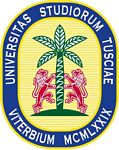

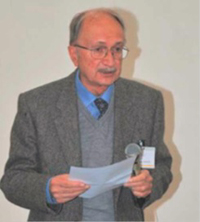
Born in Ravenna on may 9th 1932. In 1952, led by curiosity regarding microscopic world, sets and concentrates himself on the observation of vegetal organic material and discovers an interesting and yet to be known microorganism.
Prof. Gabriele Goidanich, always considered his teacher and at the laboratory of which was internal student as enrolled in the first year of the Faculty of Agriculture, is favorably impressed by this discovery, and led him to deepen the study of the microorganism. This is how he starts himself at the study of Mycology. The discovered microfungus has such unusual and extremely complex shapes that it takes a few years to Rambelli before he is ready for a description and publication. But the most interesting aspect is the coincidence of the description with that of Hughes, who in those years published a proposal for a study of microfungi, Deuteromycetes, or mitosporic Fungi, with a taxonomy based on the mechanisms of production of spores and thus on morphology of reproductive structures. Thus it was born Chaetopsina fulva, new genus and new species, definition internationally accepted even after 50 years since its establishment. After graduation (1956) and two-year scholarship at the Laboratory of Prof. Goidanich in Bologna, Rambelli wins a competitive exam in 1958 as a researcher at the ENCC Experimentation Centre in Rome, where he is commissioned to design a new laboratory for mycological and microbiological researches. At the Centre has the chance to face new mycological researches that publishes as a series of works related to material collected in the Casentino Forests (Rambelli, 1957, 1958). In 1959 deals with the study of Blastomiceti with a first design of the genus Trigonopsis and later on Kloechera and Candida genera (Rambelli, 1959).

In the same year in Paris, at the Pasteur Institute, he follows a postgraduate degree in soil microbiology. The acquired knowledge allow him to tackle a systematic study of soils in function of the influence exerted by the vegetal topsoil on telluric microflora and this way to begin exploring the vast world of microscopic fungi that colonize these environments.
In 1960 in Seattle (USA) takes part in the fifth World Forestry Congress; at the end of the congress then travels to Ottawa to work with S. Hughes universally considered, after his new proposals of systematic of mitosporic fungi, the father of modern systematic of this group of microorganisms.
At that time he publishes some systematic studies on wetlands mitosporic fungi (Rambelli, 1959) and towards the end of 1961 deals with the systematic study of very important genera such as Penicillium, Aspergillus and others, with results that are then confirmed through the comparison with families deposited in international collections.
In 1960 he spends a period of about four months in Turin at the Soil Mycology Research Center and makes researches on endomycorrhizae, under the leadership of Benjamin Pejronel.
In 1962 he goes to Beltsville in Maryland in the laboratory of Dr. Edward Hakscaylo to learn the techniques of ectomycorrhizal study. During this six-month stay he dedicates part of the time even in research on the rhizosphere of mycorrhiza and the study of fungal microflora that is typical and specialized against mycorrhizae of different plants. It is on this occasion that coins the term "mycorrhizosphera" to indicate a particular mycological environment, term now accepted by the academic community.
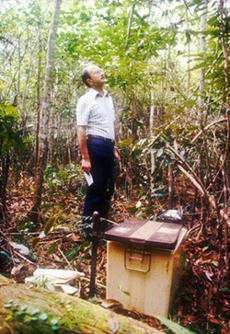
Starting from 1962 the research aimed at the study of mycorrhizae and their relationship with the surrounding microbial environment allows him a further approach to the knowledge of many species of soil microfungi, affected qualitatively and quantitatively from the vegetable topsoil as well as the symbiotic relationship. Thus he publishes many works on the mycorrhizosphera of native and exotic forest plants (Rambelli, 1962 a, b, 1963 a, b, 1966 a, b, c).
In 1962 and 1963, with the guidance of Prof. Giantommaso Scarascia Mugnozza, then a researcher at the Nuclear Research Centre of Casaccia, he studies the effects of gamma radiation on the telluric microflora, particularly in order to identify any imbalances in the quantitative balance between different physiological groups of microorganisms and in the morphology of the fungal species (Rambelli, 1962, 1963).
In 1967 and 1970, after having developed photographic techniques (1962), he publishes two volumes on mycorrhizal forms of an exotic conifer with relative morphological descriptions.
These data were then accepted and used by other foreign researchers (Hagerer, 1978) and the method of study was extended to other plants (Rambelli, 1962 a; 1963 a; 1966 a, b; 1967 a, b, c, d; 1970 a, b; 1972 a, b, c, d, e, f; 1973; 1975).
In 1968 in Brussels he is attending a conference concerning an international ecological theme (IBP International Biological Program) which presents a reading on the importance of preserving the radical symbiotic relationship for Environmental Protection of vegetation.
On that occasion, he knows Prof. Maxime Lamotte of the "École Normale Supérieure" of Paris. That meeting was crucial to give a decidedly systematic-ecological fingerprint to his research.
Lamotte, who at the time was director of the Station d'Ecologie Tropicale Lamto (Ivory Coast), offers him an internship at the said station to study the endomycorrhizae of some grasses major components of the vegetation of savannas in the region. Carried out the first research in January 1969, he identifies, describes and publishes a radical symbiont of Loudetia simplex (Rambelli 1971, 1972 a; 1975; 1978 a,b).
In 1967 he becomes a lecturer in Microbiology of soil and in 1968 in Mycology.
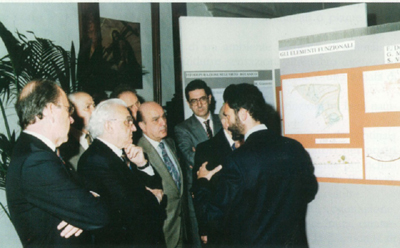
In 1969, he becomes Assistant Professor at the Faculty of Sciences, University La Sapienza, and transfers its activities at the Institute of Botany. He prepares a new Laboratory of Mycology and becomes Director of the Botanical Garden, located in Villa Corsini, in Trastevere.
In 1972 he organizes the first real scientific expedition to Lamto with a specific program consisting in withdrawals of ground for the study of its mycological population.
Thus the first works on mycological contributions of those environments are published.
Afterwards the "Tai Project" takes place: the study of the mycological saprotrophic population, with the aim of highlighting the specialization between fungal and plant species.
The project among other things has important applicative implications, especially with regard to soil fertility used by tribal agriculture.
In 1977 he organizes a preliminary expedition to Tai to inspect the area and to have the necessary elements for the first scientific expedition: demarcation of land inside the forest and taking of samples (1978). The project continues until the complete conclusion carrying 26 scientific expeditions in the period 1978-1998.
In those years he works with the pharmaceutical company Farmitalia in need of fungal determinations particularly to identify potential producers of antibiotics. At Farmitalia he organizes a mycological collection with about 5000 strains from him isolated from very different environments, between these several are from the soils and the rhizosphere of Lamto.
In 1975 he is named president of Ente Autonomo Abruzzo National Park (1975-1982).
In 1982 becomes a full professor at the Faculty of Mathematical, Physical and Natural Sciences of the University La Sapienza of Rome, holding the Chair of Mycology.
In 1987 he gets the Chair of Botany and subsequently that of Mycology at the University of Tuscia and transfers its activities in Viterbo at the newly-formed Faculty of SS.MM.FF.NN. which assumes the presidency (1987-1990). In the same year he is commissioned to design and build a botanical garden for the University which has retained the management, apart from a brief interval, until 2000.
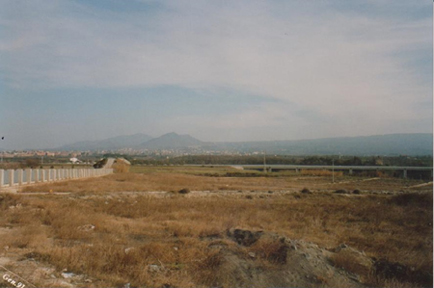

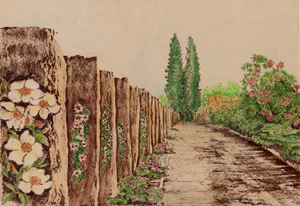

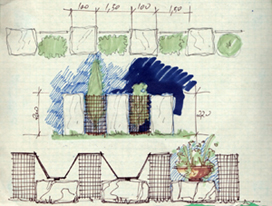
In 1981 he was FAO Consultant for the development of mushroom cultivation in developing countries and carried out missions in Vietnam, the Philippines, India, Thailand, Nepal, Bhutan, Sry Lanka, Ivory Coast, Guinea Conakry and Albania.
In 1990 he begins researches on the saprotrophic microflora in Mediterranean brush areas and in particular in Sardinia where there are still some of these ecosystems perfectly preserved.
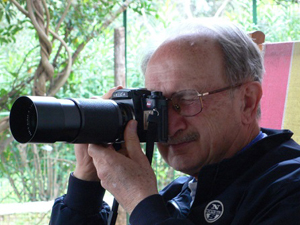
In 1994 becomes member of the Executive Committee of the International Mycological Association.
In 1996 he carries out a scientific expedition in the deserts of Namibia and the mycological examination of those soils, extraordinarily rich in microfungi, has yields two publications carried out in collaboration with Prof. Ciccarone, of the University of Foggia (Rambelli et Ciccarone, 1998, 2001 ).
In 1997 he carries out a scientific expedition in the Peruvian Amazon forest.
In 1998 he organizes and sets up, in collaboration with Dr. Roberto Miccinilli, head of Herbal Medicine School of Viterbo, a postgraduate course in Herbal Medicine.
In 1999 he is appointed Vicar Pro Rector of the University of Tuscia with the delegation for guidance (1999-2001).
In 2000, with the collaboration of Professor Saccardo and Landscape Architect Sofia Varoli Piazza, he organizes a master for "Curator of parks, gardens and botanical gardens".
In 2001, 2002 and 2005 he makes three scientific expeditions in the forests of Costa Rica for the study of fungal endophytes in native orchids of the region.
From 2005 to 2010 he conducts mycological research in the Mediterranean: Pantelleria, Circeo National Park, Boscoisola (Foggia), Salina.
He dies in Rome on February 19th, 2013.
1932 Birth
1956 Graduates in Agricultural Sciences (110 of 110 cum laude) at Bologna University
1958 Winner of the competition for the position of researcher at Centro di Sperimentazione Ente Nazionale Cellulosa e Carta, Mycology Laboratory, in Rome
1968 Becomes lecturer in Mycology. In Brussels: Participates at the Congress "International Biological Program". Start of collaboration with the Ecole Normale Superieure (Prof. M. Lamotte) for the study of mycological savannas and forests in Ivory Coast
1969 First expedition to Lamto (Ivory Coast) in savannah for sampling. Winner of the competition for a place as Aggregate Professor at the Botanical Institute (now Department) of the University of Rome La Sapienza
1972 Second expedition to Ivory Coast. Collaboration with Professor Lamotte and drafting of the project for the study of microfungal communities in Tai National Park forest (Côte d'Ivoire) and obtaining a grant from UNESCO to conduct such research
From 1972 to 1988 He led 26 expeditions in Tai (Ivory Coast) to collect and sample mycological material
1975-82 President of Ente Autonomo Parco Nazionale d’Abruzzo
1981 In Xalapa (Mexico): mycological collaboration and course of Mycology at the Center for Ecological Research (on Italo-Latin American Institute in Rome invitation). Starting from this year he collaborates with FAO
1982 Professor of Mycology at Faculty of Mathematical, Physical and Natural Sciences La Sapienza University of Rome
1987 Arrives at the University of Tuscia in Viterbo for the chair of Systematic Botany and Mycology. Appointed Dean of the Faculty of Biological Sciences. Comes the contract for the construction of the Botanical Garden
1997 Mycological expedition in Peruvian Amazon forest
Between 2001 and 2005 Three mycological sampling expeditions in Costa Rica's forests
2005-2010 Mycological Research in the Mediterranean: Pantelleria, Circeo National Park, Boscoisola (Foggia), Salina
19th February 2013 Dies in Rome
7th July 2014 The Viterbo Botanical Garden is dedicated to him
Foreign trips
 Philippines
Philippines  India
India  Thailand
Thailand
 Nepal
Nepal  Bhutan
Bhutan  Sri Lanka
Sri Lanka  Ivory Coast
Ivory Coast  Guinea Conakry
Guinea Conakry  Albania
Albania 
 Namibia
NamibiaPasqualetti M., Mulas B., Rambelli A., Tempesta S. (2014). Fungi in Mediterranean Ecosystem. Dedicated to the Memory of Angelo Rambelli. Plant Biosystems, 148(2), p. 342-356.
Pasqualetti M., Mulas B., Rambelli A., Tempesta S. ( 2014 ). Saprotrophic litter fungi in a Mediterranean ecosystem: Behaviour on different substrata. Plant Biosystems , 148.
Giornata in memoria di Angelo Rambelli 9/05/2014 organizzata dalla Società Botanica Italiana presso l'Orto Botanico della Sapienza.
La Redazione di Naturalmente (2013). Ricordo di Angelo Rambelli. Naturalmente - notiziario di Nuova Micologia, (6), p. 4.